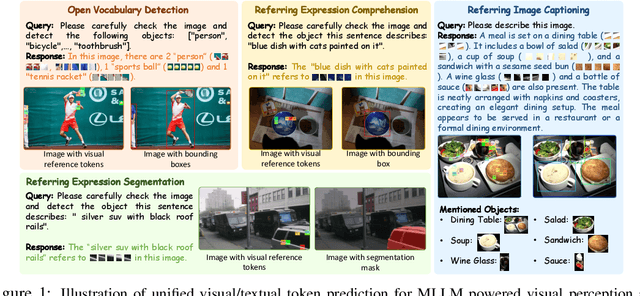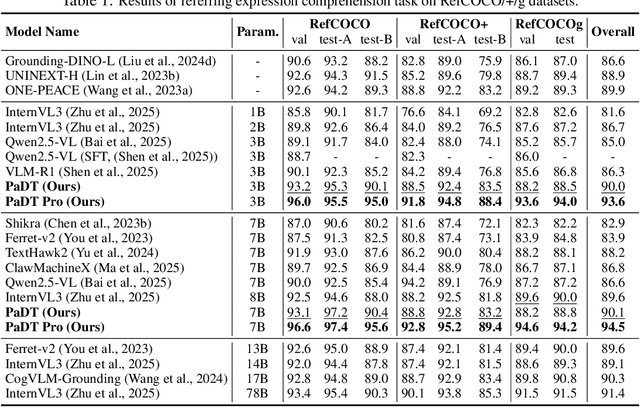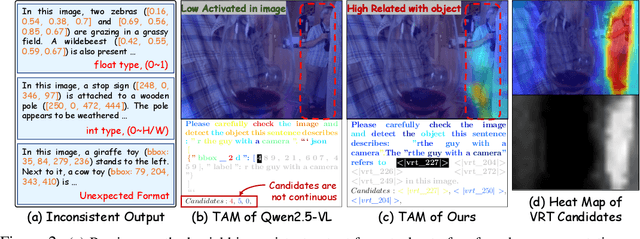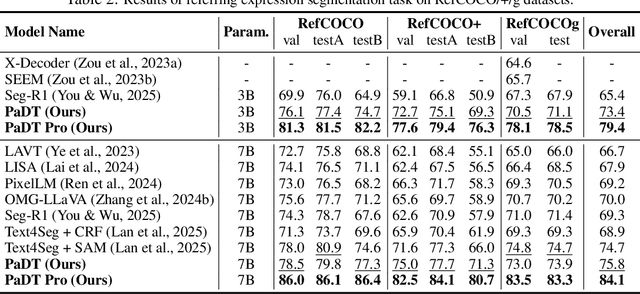Xiaofen Xing
Profit Mirage: Revisiting Information Leakage in LLM-based Financial Agents
Oct 09, 2025Abstract:LLM-based financial agents have attracted widespread excitement for their ability to trade like human experts. However, most systems exhibit a "profit mirage": dazzling back-tested returns evaporate once the model's knowledge window ends, because of the inherent information leakage in LLMs. In this paper, we systematically quantify this leakage issue across four dimensions and release FinLake-Bench, a leakage-robust evaluation benchmark. Furthermore, to mitigate this issue, we introduce FactFin, a framework that applies counterfactual perturbations to compel LLM-based agents to learn causal drivers instead of memorized outcomes. FactFin integrates four core components: Strategy Code Generator, Retrieval-Augmented Generation, Monte Carlo Tree Search, and Counterfactual Simulator. Extensive experiments show that our method surpasses all baselines in out-of-sample generalization, delivering superior risk-adjusted performance.
QuantAgents: Towards Multi-agent Financial System via Simulated Trading
Oct 06, 2025Abstract:In this paper, our objective is to develop a multi-agent financial system that incorporates simulated trading, a technique extensively utilized by financial professionals. While current LLM-based agent models demonstrate competitive performance, they still exhibit significant deviations from real-world fund companies. A critical distinction lies in the agents' reliance on ``post-reflection'', particularly in response to adverse outcomes, but lack a distinctly human capability: long-term prediction of future trends. Therefore, we introduce QuantAgents, a multi-agent system integrating simulated trading, to comprehensively evaluate various investment strategies and market scenarios without assuming actual risks. Specifically, QuantAgents comprises four agents: a simulated trading analyst, a risk control analyst, a market news analyst, and a manager, who collaborate through several meetings. Moreover, our system incentivizes agents to receive feedback on two fronts: performance in real-world markets and predictive accuracy in simulated trading. Extensive experiments demonstrate that our framework excels across all metrics, yielding an overall return of nearly 300% over the three years (https://quantagents.github.io/).
Patch-as-Decodable-Token: Towards Unified Multi-Modal Vision Tasks in MLLMs
Oct 02, 2025



Abstract:Multimodal large language models (MLLMs) have advanced rapidly in recent years. However, existing approaches for vision tasks often rely on indirect representations, such as generating coordinates as text for detection, which limits performance and prevents dense prediction tasks like segmentation. To overcome these challenges, we introduce Patch-as-Decodable Token (PaDT), a unified paradigm that enables MLLMs to directly generate both textual and diverse visual outputs. Central to PaDT are Visual Reference Tokens (VRTs), derived from visual patch embeddings of query images and interleaved seamlessly with LLM's output textual tokens. A lightweight decoder then transforms LLM's outputs into detection, segmentation, and grounding predictions. Unlike prior methods, PaDT processes VRTs independently at each forward pass and dynamically expands the embedding table, thus improving localization and differentiation among similar objects. We further tailor a training strategy for PaDT by randomly selecting VRTs for supervised fine-tuning and introducing a robust per-token cross-entropy loss. Our empirical studies across four visual perception and understanding tasks suggest PaDT consistently achieving state-of-the-art performance, even compared with significantly larger MLLM models. The code is available at https://github.com/Gorilla-Lab-SCUT/PaDT.
Long-Context Speech Synthesis with Context-Aware Memory
Aug 20, 2025Abstract:In long-text speech synthesis, current approaches typically convert text to speech at the sentence-level and concatenate the results to form pseudo-paragraph-level speech. These methods overlook the contextual coherence of paragraphs, leading to reduced naturalness and inconsistencies in style and timbre across the long-form speech. To address these issues, we propose a Context-Aware Memory (CAM)-based long-context Text-to-Speech (TTS) model. The CAM block integrates and retrieves both long-term memory and local context details, enabling dynamic memory updates and transfers within long paragraphs to guide sentence-level speech synthesis. Furthermore, the prefix mask enhances the in-context learning ability by enabling bidirectional attention on prefix tokens while maintaining unidirectional generation. Experimental results demonstrate that the proposed method outperforms baseline and state-of-the-art long-context methods in terms of prosody expressiveness, coherence and context inference cost across paragraph-level speech.
Parallel GPT: Harmonizing the Independence and Interdependence of Acoustic and Semantic Information for Zero-Shot Text-to-Speech
Aug 06, 2025Abstract:Advances in speech representation and large language models have enhanced zero-shot text-to-speech (TTS) performance. However, existing zero-shot TTS models face challenges in capturing the complex correlations between acoustic and semantic features, resulting in a lack of expressiveness and similarity. The primary reason lies in the complex relationship between semantic and acoustic features, which manifests independent and interdependent aspects.This paper introduces a TTS framework that combines both autoregressive (AR) and non-autoregressive (NAR) modules to harmonize the independence and interdependence of acoustic and semantic information. The AR model leverages the proposed Parallel Tokenizer to synthesize the top semantic and acoustic tokens simultaneously. In contrast, considering the interdependence, the Coupled NAR model predicts detailed tokens based on the general AR model's output. Parallel GPT, built on this architecture, is designed to improve zero-shot text-to-speech synthesis through its parallel structure. Experiments on English and Chinese datasets demonstrate that the proposed model significantly outperforms the quality and efficiency of the synthesis of existing zero-shot TTS models. Speech demos are available at https://t1235-ch.github.io/pgpt/.
S2SBench: A Benchmark for Quantifying Intelligence Degradation in Speech-to-Speech Large Language Models
May 20, 2025Abstract:End-to-end speech large language models ((LLMs)) extend the capabilities of text-based models to directly process and generate audio tokens. However, this often leads to a decline in reasoning and generation performance compared to text input, a phenomenon referred to as intelligence degradation. To systematically evaluate this gap, we propose S2SBench, a benchmark designed to quantify performance degradation in Speech LLMs. It includes diagnostic datasets targeting sentence continuation and commonsense reasoning under audio input. We further introduce a pairwise evaluation protocol based on perplexity differences between plausible and implausible samples to measure degradation relative to text input. We apply S2SBench to analyze the training process of Baichuan-Audio, which further demonstrates the benchmark's effectiveness. All datasets and evaluation code are available at https://github.com/undobug/S2SBench.
Enhancing User-Oriented Proactivity in Open-Domain Dialogues with Critic Guidance
May 18, 2025Abstract:Open-domain dialogue systems aim to generate natural and engaging conversations, providing significant practical value in real applications such as social robotics and personal assistants. The advent of large language models (LLMs) has greatly advanced this field by improving context understanding and conversational fluency. However, existing LLM-based dialogue systems often fall short in proactively understanding the user's chatting preferences and guiding conversations toward user-centered topics. This lack of user-oriented proactivity can lead users to feel unappreciated, reducing their satisfaction and willingness to continue the conversation in human-computer interactions. To address this issue, we propose a User-oriented Proactive Chatbot (UPC) to enhance the user-oriented proactivity. Specifically, we first construct a critic to evaluate this proactivity inspired by the LLM-as-a-judge strategy. Given the scarcity of high-quality training data, we then employ the critic to guide dialogues between the chatbot and user agents, generating a corpus with enhanced user-oriented proactivity. To ensure the diversity of the user backgrounds, we introduce the ISCO-800, a diverse user background dataset for constructing user agents. Moreover, considering the communication difficulty varies among users, we propose an iterative curriculum learning method that trains the chatbot from easy-to-communicate users to more challenging ones, thereby gradually enhancing its performance. Experiments demonstrate that our proposed training method is applicable to different LLMs, improving user-oriented proactivity and attractiveness in open-domain dialogues.
SoCov: Semi-Orthogonal Parametric Pooling of Covariance Matrix for Speaker Recognition
Apr 23, 2025Abstract:In conventional deep speaker embedding frameworks, the pooling layer aggregates all frame-level features over time and computes their mean and standard deviation statistics as inputs to subsequent segment-level layers. Such statistics pooling strategy produces fixed-length representations from variable-length speech segments. However, this method treats different frame-level features equally and discards covariance information. In this paper, we propose the Semi-orthogonal parameter pooling of Covariance matrix (SoCov) method. The SoCov pooling computes the covariance matrix from the self-attentive frame-level features and compresses it into a vector using the semi-orthogonal parametric vectorization, which is then concatenated with the weighted standard deviation vector to form inputs to the segment-level layers. Deep embedding based on SoCov is called ``sc-vector''. The proposed sc-vector is compared to several different baselines on the SRE21 development and evaluation sets. The sc-vector system significantly outperforms the conventional x-vector system, with a relative reduction in EER of 15.5% on SRE21Eval. When using self-attentive deep feature, SoCov helps to reduce EER on SRE21Eval by about 30.9% relatively to the conventional ``mean + standard deviation'' statistics.
HedgeAgents: A Balanced-aware Multi-agent Financial Trading System
Feb 17, 2025



Abstract:As automated trading gains traction in the financial market, algorithmic investment strategies are increasingly prominent. While Large Language Models (LLMs) and Agent-based models exhibit promising potential in real-time market analysis and trading decisions, they still experience a significant -20% loss when confronted with rapid declines or frequent fluctuations, impeding their practical application. Hence, there is an imperative to explore a more robust and resilient framework. This paper introduces an innovative multi-agent system, HedgeAgents, aimed at bolstering system robustness via ``hedging'' strategies. In this well-balanced system, an array of hedging agents has been tailored, where HedgeAgents consist of a central fund manager and multiple hedging experts specializing in various financial asset classes. These agents leverage LLMs' cognitive capabilities to make decisions and coordinate through three types of conferences. Benefiting from the powerful understanding of LLMs, our HedgeAgents attained a 70% annualized return and a 400% total return over a period of 3 years. Moreover, we have observed with delight that HedgeAgents can even formulate investment experience comparable to those of human experts (https://hedgeagents.github.io/).
PsyDT: Using LLMs to Construct the Digital Twin of Psychological Counselor with Personalized Counseling Style for Psychological Counseling
Dec 18, 2024



Abstract:Currently, large language models (LLMs) have made significant progress in the field of psychological counseling. However, existing mental health LLMs overlook a critical issue where they do not consider the fact that different psychological counselors exhibit different personal styles, including linguistic style and therapy techniques, etc. As a result, these LLMs fail to satisfy the individual needs of clients who seek different counseling styles. To help bridge this gap, we propose PsyDT, a novel framework using LLMs to construct the Digital Twin of Psychological counselor with personalized counseling style. Compared to the time-consuming and costly approach of collecting a large number of real-world counseling cases to create a specific counselor's digital twin, our framework offers a faster and more cost-effective solution. To construct PsyDT, we utilize dynamic one-shot learning by using GPT-4 to capture counselor's unique counseling style, mainly focusing on linguistic style and therapy techniques. Subsequently, using existing single-turn long-text dialogues with client's questions, GPT-4 is guided to synthesize multi-turn dialogues of specific counselor. Finally, we fine-tune the LLMs on the synthetic dataset, PsyDTCorpus, to achieve the digital twin of psychological counselor with personalized counseling style. Experimental results indicate that our proposed PsyDT framework can synthesize multi-turn dialogues that closely resemble real-world counseling cases and demonstrate better performance compared to other baselines, thereby show that our framework can effectively construct the digital twin of psychological counselor with a specific counseling style.
 Add to Chrome
Add to Chrome Add to Firefox
Add to Firefox Add to Edge
Add to Edge